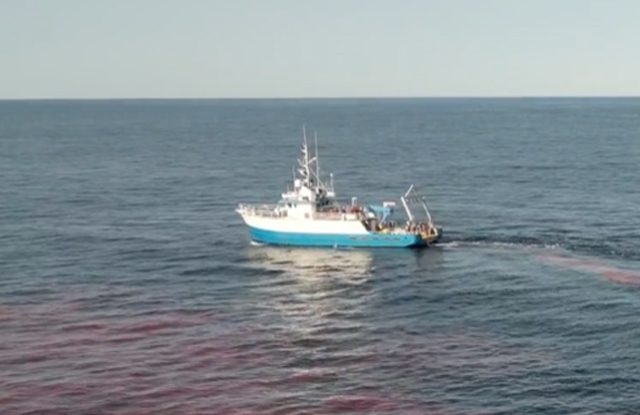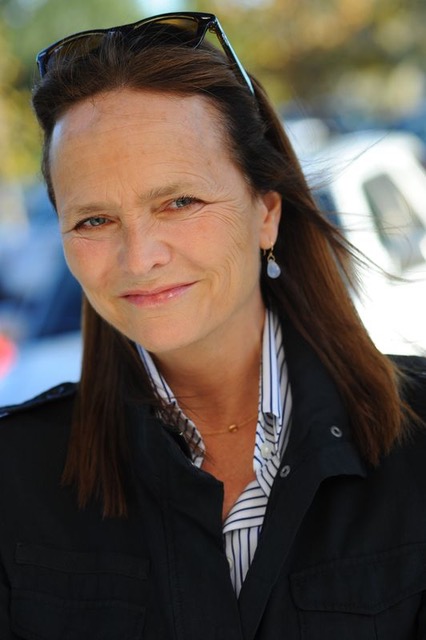By Katie Carpenter, Everwild Media
At a time when the federal government is cutting climate research and staff who protect our environment and forecast extreme weather, it can be hard to be hopeful about curbing climate change.
“Hope floats” is an expression for challenging times, when hope is most needed to overcome obstacles to resilience. You know what else floats? Huge, steel-hulled research vessels, out at sea in gale-force winds, carrying scientists who are testing ways to enable the ocean to remove more carbon from the air.
Say what? That sounded like an optimistic idea, so my filmmaking team hitched a ride on one of the expeditions supported by the Woods Hole Oceanographic Institution (WHOI), a leading independent non-profit research institution in Massachusetts. Their scientists work far away from Florida, but their experiments benefit us locally.

Carbon emissions trap heat in the atmosphere, warming the planet and causing glaciers and ice sheets to melt while also expanding seawater, causing sea level rise. In Florida, rising seas can lead to increased flooding during storms and king tides. Water tables also rise, pushing saltwater into our freshwater sources.
WHOI scientists conduct their work out in the cold mid-ocean, braving 15-foot waves and seasickness, balancing beakers while clinging to gunwales.
“We’ve known for a long time that the oceans play a critical role in the regulation of climate, of global temperature and of carbon dioxide concentrations in the atmosphere,” said geochemist Adam Subhas of WHOI.
We’ve read that the ocean already absorbs approximately 30% of the carbon we emit. The WHOI scientists strive to learn how to enable the ocean to absorb even more.
“Alkalinity is the opposite of acidity,” Subhas said. “Substances like sodium hydroxide, the alkalinity source we’ll be using, are routinely used to adjust the pH of drinking water, and the two chemical components of sodium hydroxide are common in seawater.
“Our results show that if we’re able to temporarily raise the pH in a patch of the ocean, the surface waters will absorb more carbon dioxide, before quickly returning to normal.”
There are several science organizations and companies that have caught this wave, launching field trials to test ocean-based climate solutions. Raising millions in startup funding or selling carbon credits have helped to finance these efforts. They’re in a rush, and with good reason – our atmosphere’s carbon count just keeps getting higher.
The non-profit network Ocean Visions monitors progress on ocean-based carbon removal issues: efficacy, safety, durability and measurability. For example, it’s not easy to determine how much carbon is actually being removed from the atmosphere by each approach. Modelling helps, but to be certain, you need to get underwater.
The scientists at Hourglass Climate, a carbon removal verification company, are developing novel measurement techniques. The founder and CEO, Grace Andrews, is highly motivated to help marine carbon dioxide removal succeed.
“We still have to do widespread emission reductions,” Andrews reminds us. “Plus we also have to do gigaton-scale carbon dioxide removal. By combining both of these, that’s really the only way we have any chance of meeting our climate goals.”

WHOI scientists conduct these experiments when conditions are best during the summer, although hurricanes are an occasional hazard. While they work on the surface to coax carbon out of the air and into the sea, Andrews and her colleagues are underwater in scuba gear to measure the dissolved inorganic carbon that results from the process. Why does she do it?
“I do it for my kids – they’re the ones who will be around to tell us whether or not we hit our climate goals. They’ll be the ones by mid-century, thinking about whether to have children, if we have curbed climate change, and are we living in a world that’s safe?
“So, I do this for them,” Andrews said, “to try and give them that world.”
With a new baby at home, Subhas concurs. “It is important that research to test the safety and effectiveness of this technique move forward. The cost of not doing this research – a planet, and an ocean, in crisis – is too great.”
To the ocean scientists preparing to embark on upcoming expeditions, we thank you, and wish you fair winds and a following sea.
Katie Carpenter is a West Palm Beach-based filmmaker with Everwild Media (www.everwildmedia.com), producing documentaries about conservation, climate change and solutions. Banner photo: Another image of WHOI scientists dispersing a non-toxic dye tracer (Photo courtesy of Katie Carpenter).
Sign up for The Invading Sea newsletter by visiting here. To support The Invading Sea, click here to make a donation. If you are interested in submitting an opinion piece to The Invading Sea, email Editor Nathan Crabbe at ncrabbe@fau.edu.



